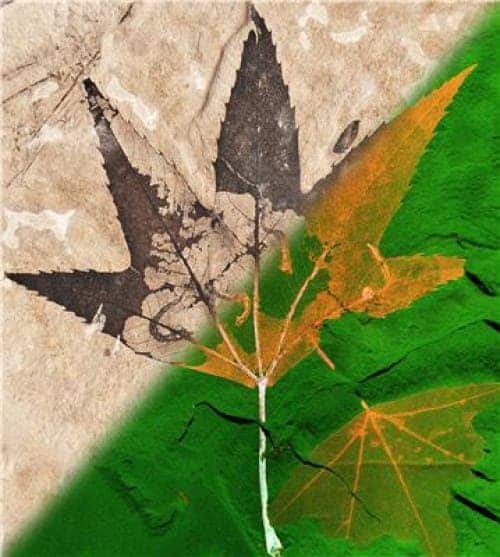
Tucked away in storage at a Berlin museum, a modest wooden shrine had gone largely unstudied for decades. It looked ordinary at first glance, but when researchers finally examined it closely, they discovered something unexpected: tiny scrolls inside, still holding traces of writing from nearly a century ago.
Wrapped in yellow silk, the three tiny scrolls had resisted time, war, and neglect. Now, using cutting-edge 3D X-ray imaging and artificial intelligence, researchers have brought one of them back to life—virtually unfurling it without laying a finger on the delicate parchment.
What the Scrolls Remember
The wooden shrine is known as a Gungervaa, a type of portable altar once common among Mongolia’s Buddhist families. Measuring just over half a meter tall, the Berlin Gungervaa likely traveled vast distances across the steppe before being collected during a 1930s expedition and brought to Europe.
Over the centuries, these shrines were filled with sacred objects—statues, flowers, paintings, and especially dharanis, tiny scrolls bearing Buddhist mantras. But in the 1920s, during the Soviet-backed Mongolian Revolution, these shrines were systematically destroyed. By the time the shrine reached the National Museums in Berlin, much of its history had already been lost, and no one knew much about it.
Restorer Birgit Kantzenbach was the first to open them in almost a century. What she saw was a jumbled collection of sacred objects—fabric flowers, miniature bronzes, and three delicate scrolls wrapped in silk. The scrolls, each barely longer than a matchstick, were impossible to read without risking irreversible damage.
Yet, Tobias Arlt, a physicist at Helmholtz-Zentrum Berlin, had an idea: what if they could peer inside the scrolls using X-ray tomography?
Reading the Scroll Without Touching It
Arlt and his team brought the scrolls to BESSY II, a powerful synchrotron in Berlin. A synchotron is essentially a particle accelerator that produces very bright, focused light, predominantly in the X-ray region. With this technology, they used X-rays to scan each scroll slice by slice, compiling more than 2,500 images per sub-section. Because each scroll was wrapped nearly 50 times around itself, multiple scans were stitched together to form a 3D model of each winding.
“The high-resolution 3D images show that there are around 50 windings in each scroll, with strips measuring over 80 centimeters that are wound tightly and carefully,” says Arlt.

The technique is adapted from battery research, where scientists use tomography to inspect lithium cells without cracking them open. The team used specialized software to trace the scroll’s path through the volume and then digitally “unroll” it. This labor-intensive process involved manually identifying each layer and isolating it with specialized imaging tools.
This isn’t the first time scientists have used X-rays to read hidden texts. In recent years, researchers virtually unwrapped carbonized scrolls from Herculaneum, a Roman town buried in the eruption of Vesuvius. There, too, AI played a vital role—extracting Greek words like “disgust” from papyri too fragile to touch.
But in the Berlin shrine, the past whispered in a different tongue.
The Message Wrapped Inside
From the digital unrolling emerged faint lines of writing in Tibetan characters. The language, however, was not Tibetan. It was Sanskrit.
Among the legible fragments, one phrase stood out: “Om mani padme hum,” a timeless mantra that translates loosely as “Praise to the jewel in the lotus.” It’s a prayer for universal compassion and a cornerstone of Tibetan Buddhist devotion.
This textual blend (Sanskrit language in Tibetan script) was surprising. Was this combination common? Or was it particular to a specific historical or geographical origin?
The answer remains elusive, but the scroll’s craftsmanship offers some clues. The ink appears to contain metal particles, which show up as bright spots in X-ray scans. Traditionally, Chinese ink was made with soot and animal glue, neither of which would appear on an X-ray. Metal-based ink is unusual.
Kantzenbach and Arlt speculate the ink might contain relic particles (ashes or bone dust from revered lamas) a practice noted in some Tibetan traditions.
The technique used in the study doesn’t yet allow researchers to chemically identify the ink’s precise ingredients. Still, the very presence of legible text is an achievement.
“This is interesting because Chinese ink traditionally consists of a mixture of soot and animal glue, but in this case, ink containing metal particles was apparently used,” Kantzenbach says.

A Future for Fragile Scrolls
The scrolls from the Berlin Gungervaa are now part of an exhibition at the Humboldt Forum titled Restoration in Dialogue, open until June 2026. Plans are underway to return the shrine to Mongolia afterward.
The researchers hope their methods will inspire others to use virtual unrolling in archaeology, conservation, and historical studies. The process remains labor-intensive. Layers sometimes stick together in the virtual model, and current algorithms struggle to separate them cleanly. But as machine learning improves, the technique could become a standard tool for museums worldwide.
As with the Vesuvius Challenge—an ongoing global effort to decode Herculaneum scrolls—momentum is building. A generation ago, these objects were considered unreadable. Now, they’re slowly giving up their secrets.
The Gungervaa scrolls don’t solve every mystery. We still don’t know who wrote them or when. But thanks to a synchrotron beam, a few lines of Sanskrit, and a team of patient scientists, we do know this:
Someone, long ago, wrapped a prayer in silk and sent it out into the world. And now, it has returned.
The study was published in the Journal of Cultural Heritage.



